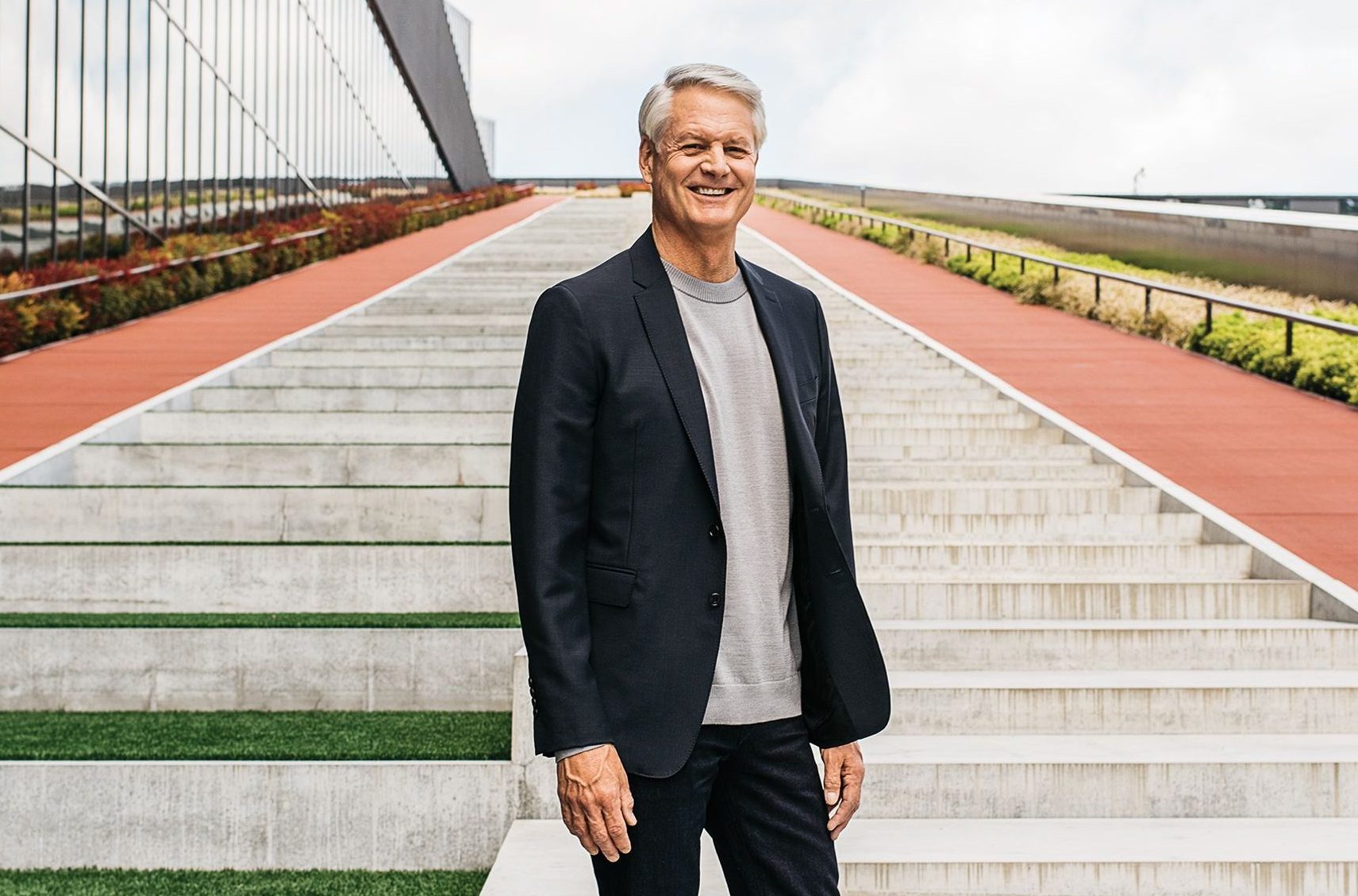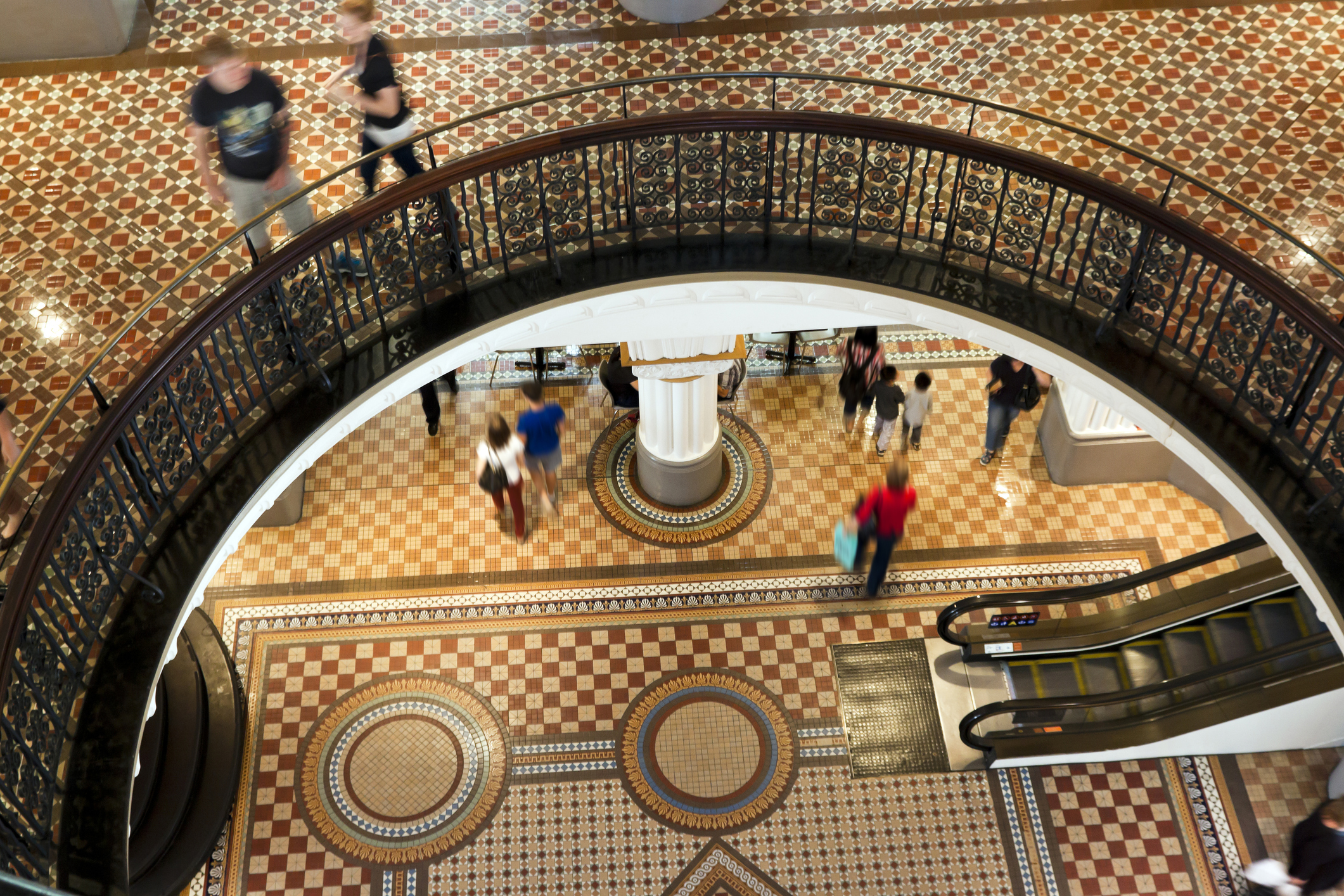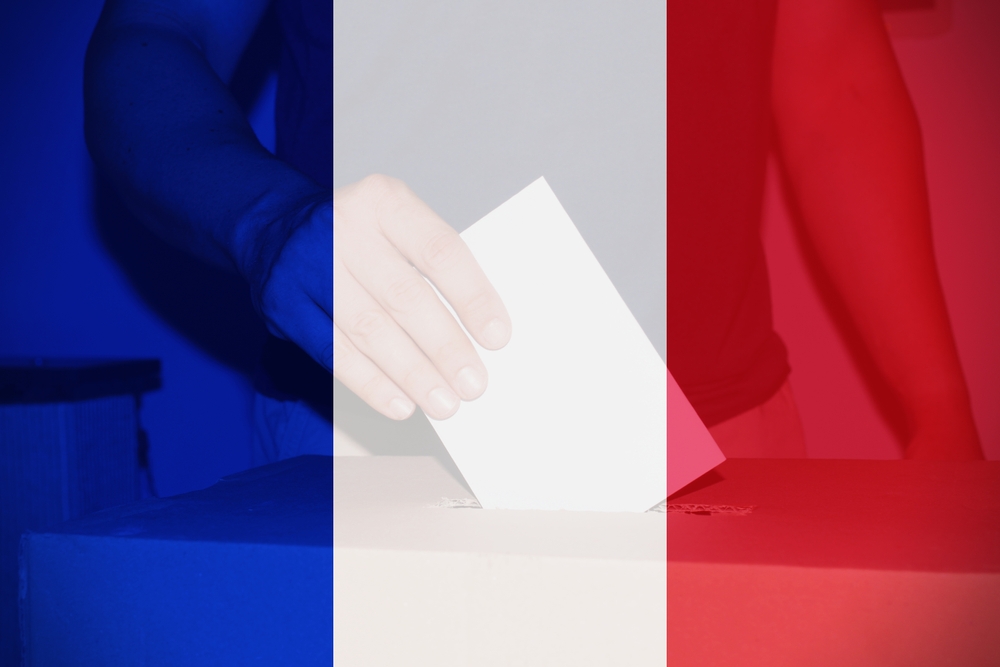The Surprising Way Nike CEO John Donahoe Starts His Day
Including a litre of water. a workout and a burgeoning gratitude practice.
Early in his career, Nike President and CEO John Donahoe heard a speaker at a Bain & Company training program make an observation that immediately clicked with him: Elite athletes tend to view getting help as a sign of strength. “He was talking about [how] Michael Jordan didn’t only have Phil Jackson as his bench coach, but he had a personal chef; he had a psychological coach,” says Donahoe, 61. “And he said, ‘You people in business, you act like getting help is a sign of weakness. You act like you have all the answers. If you want to perform at a world-class level, you’ve got to feel comfortable consuming help.’ ” In the decades since, Donahoe has worked with multiple leadership coaches; seen his therapist, Jill Mellick, for 30 years; and established his own board of personal directors—trusted friends he turns to for advice.
Donahoe, who was born in Evanston, Illinois, is both a father of four with his wife, Eileen, and a four-time CEO, having led Bain & Company, eBay and the digital workflow company ServiceNow. In January 2020, after having been on Nike’s board of directors since 2014, he moved to Oregon when he became the company’s fourth chief executive, following co-founder Phil Knight, William Perez and Mark Parker.
Since taking Nike’s top job, Donahoe has had his work cut out for him. Before he became CEO, there had been negative reports in the media on Nike’s treatment of female employees and female athlete partners. Donahoe has set a target of filling 45 percent of roles at the vice president level and higher with women by 2025. He also aims to have 30 percent representation of racial and ethnic minorities at the director level and above in Nike’s U.S. workforce. He had planned to go on a 100-day global “listening tour” that, due to the pandemic, he had to complete virtually. This past week, Nike closed its corporate offices around the world to give employees time off to rest and recharge.
“In many ways, Nike’s viewed as a real leader in advocating for diversity externally,” he says. “We want to make sure we’re also a leader internally.”
What time do you usually wake up on Mondays?
I’m a creature of habit. I wake up at 5:45 every weekday morning. The first thing I do is drink 33 ounces (approx. 1-litre) of water and two cups of coffee, and then I stretch using the Hyperice Hypervolt [a massage recovery device]. I meditate for 10 minutes and then I have a Nike personal trainer—his name’s JC Cook. I work out from 7 to 8, four mornings a week with him.
What day do you take off?
That varies. I have learned a lot from a guy we have at Nike, Ryan Flaherty, who is an elite trainer and has looked at the data about what elite athletes do. And he talks about the five facets of sport, which are movement, sleep, nutrition, mindset and recovery, recovery being really important. So we just kind of gauge how my body’s feeling any given week, or sometimes I have early meetings—that tends to dictate it too.
How many hours of sleep do you get per night?
I’ve accepted that I need sleep. Earlier in my career, I told myself I don’t really need that much sleep. And the reality is sleep’s really important. And so I target getting seven-plus hours a night. Sometimes that’s unrealistic, so I target getting 70 hours every 10 days.
What do you eat for breakfast to start the week off right?
I have a protein shake, and then once I get to the office I’ll have a Chobani yogurt and a banana.
Is there a time of day or the week that you’re most creative?
The morning would be my best time. There are some mornings where I’ll stay home for the first couple of hours with no meetings, either to reflect or to collect my thoughts or if I have to write something. On a Monday morning, you have to have a plan for the week, so usually on Sunday, I’ll sit down and look at my week and try to just for a few moments reflect on what are the most important things I want to get done for the week. I’ve learned over my career to be more conscious of where are the moments I’m going to prepare for things, and schedule those in, legitimize those things—including the times I want to be creative.
When you’re reflecting, what does that look like for you?
I took a year off, a sabbatical so to speak, in 2015, and I did a 10-day silent Buddhist retreat up at Spirit Rock [a meditation centre in Woodacre, California] with [author and Buddhist practitioner] Jack Kornfield. Jack’s been a wonderful spiritual counsellor and adviser. What I’ve been doing a lot lately is gratitude practice. What we know from brain sciences and Buddhism teachings is you can, in fact, train your brain. Your brain becomes more negative over time because negative experiences stick in our brains. So you can counteract that by being more conscious of things you’re appreciative of, of the good things in your life. And so I just think, What am I grateful for in the broad sense of my life? What am I grateful for in the previous day? What am I looking forward to that I’m going to enjoy in the coming day? It’s a good exercise. For so many years, I was very diligent about physical working out. But what I’ve learned in my sort of later years, the last five to 10, is the importance of what you might call a workout of the mind. It’s that notion of mindfulness, and it needs the same kind of discipline and focus that the physical side needs.
What changes have you made as Nike CEO so far?
Digital is infusing every element of our consumers’ lives. So whether it’s a Nike Training Club, Nike Run Club, our activity apps or the SNKRS app or the Nike mobile app, consumers have led us to that and we’ve tried to make sure we’re right there with them in all aspects of their lives.
Do you have a guiding philosophy?
I’m an advocate of servant leadership. When I understand that everything I’m doing is in service to a purpose, in service to others, I have a wellspring of motivation and inspiration even through periods of adversity. Just staying connected with this notion of, we’re on earth to serve others. My leadership role models have always been head coaches—you think about Phil Jackson, Coach K [Mike Krzyzewski], John Thompson, Tara [VanDerveer], who just won the NCAA [women’s basketball] championship—they’re leaders that lead from almost behind, serving their players, serving their programs, serving a broader cause. The power of service has been a recurring lesson throughout my life, my career.
What lessons did you learn about running a company during the pandemic?
I think change and uncertainty are the new normal…so just accepting and then dealing with continuous change and uncertainty. Second, the importance of being really clear on your values, because you need a rudder. At Nike, early on in the pandemic, we reflected on our values, and that’s what drove our decision to provide pay continuity to all of our store athletes [retail employees]. Even in the months when all of our stores were closed, it was a no-brainer for us. It was an investment of [around] $500 million, but it was absolutely the right thing to do. The third thing is the importance of communication and transparency. While leading a Zoom life is taxing in many ways, what Zoom has been able to do is, I’m in front of 25,000 people once a month on Zoom. And then the last thing it’s reinforced for me as a leader is the power of authenticity and vulnerability, because I don’t have the answers many times, whether it’s around the pandemic or racial and social injustice issues or geopolitical issues. But I think there’s a real power and a real need to just show up and be authentic, be vulnerable and be present.
How does Nike think about appealing to a Gen Z audience?
We talk about our consumer muse being the young person who’s 16 to 24 years old. This generation, they want their individuality. They want to be understood and respected for who they are, and that can vary across race, gender, point of view, background. They don’t want to be labelled, and yet they also want to be part of a community. They want diversity, equity and inclusiveness; they want that to be their world. It’s such an interesting time to both try to understand the unique qualities of each individual but have that not be divisive, have that be community building…. I come away with a great deal of hope when we listen to Gen Z because they’re stepping up in ways where they’ll be responsible leaders of this world in the next 10, 20, 30, 40 years.
This interview has been edited and condensed for clarity.
5 Monday Must-Haves
Hyperice Hypervolt
“Every morning, I stretch using the Hyperice for 20 minutes.”
Insight Timer
“I have an app on my phone…even commuting into work, I’ll just do gratitude practice, which in this moment in time is a really helpful and useful thing.”
Nike Space Hippie Shoes
“The Space Hippie takes trash (literally!) and transforms it into a great shoe with a unique aesthetic.”
Vitamins
“A multivitamin, vitamin B, vitamin D or curcumin…. I almost don’t even know what’s in the handful of things I take; I’m willing to try anything.”
HO
“A Monday morning, it’s not that different than many others: Start with 33 ounces of water.”
Reprinted by permission of The Wall Street Journal, Copyright 2021 Dow Jones & Company. Inc. All Rights Reserved Worldwide. Original date of publication: August 30, 2021.
 Copyright 2020, Dow Jones & Company, Inc. All Rights Reserved Worldwide. LEARN MORE
Copyright 2020, Dow Jones & Company, Inc. All Rights Reserved Worldwide. LEARN MORE
This stylish family home combines a classic palette and finishes with a flexible floorplan
Just 55 minutes from Sydney, make this your creative getaway located in the majestic Hawkesbury region.
As Paris makes its final preparations for the Olympic games, its residents are busy with their own—packing their suitcases, confirming their reservations, and getting out of town.
Worried about the hordes of crowds and overall chaos the Olympics could bring, Parisians are fleeing the city in droves and inundating resort cities around the country. Hotels and holiday rentals in some of France’s most popular vacation destinations—from the French Riviera in the south to the beaches of Normandy in the north—say they are expecting massive crowds this year in advance of the Olympics. The games will run from July 26-Aug. 1.
“It’s already a major holiday season for us, and beyond that, we have the Olympics,” says Stéphane Personeni, general manager of the Lily of the Valley hotel in Saint Tropez. “People began booking early this year.”
Personeni’s hotel typically has no issues filling its rooms each summer—by May of each year, the luxury hotel typically finds itself completely booked out for the months of July and August. But this year, the 53-room hotel began filling up for summer reservations in February.
“We told our regular guests that everything—hotels, apartments, villas—are going to be hard to find this summer,” Personeni says. His neighbours around Saint Tropez say they’re similarly booked up.
As of March, the online marketplace Gens de Confiance (“Trusted People”), saw a 50% increase in reservations from Parisians seeking vacation rentals outside the capital during the Olympics.
Already, August is a popular vacation time for the French. With a minimum of five weeks of vacation mandated by law, many decide to take the entire month off, renting out villas in beachside destinations for longer periods.
But beyond the typical August travel, the Olympics are having a real impact, says Bertille Marchal, a spokesperson for Gens de Confiance.
“We’ve seen nearly three times more reservations for the dates of the Olympics than the following two weeks,” Marchal says. “The increase is definitely linked to the Olympic Games.”

Getty Images
According to the site, the most sought-out vacation destinations are Morbihan and Loire-Atlantique, a seaside region in the northwest; le Var, a coastal area within the southeast of France along the Côte d’Azur; and the island of Corsica in the Mediterranean.
Meanwhile, the Olympics haven’t necessarily been a boon to foreign tourism in the country. Many tourists who might have otherwise come to France are avoiding it this year in favour of other European capitals. In Paris, demand for stays at high-end hotels has collapsed, with bookings down 50% in July compared to last year, according to UMIH Prestige, which represents hotels charging at least €800 ($865) a night for rooms.
Earlier this year, high-end restaurants and concierges said the Olympics might even be an opportunity to score a hard-get-seat at the city’s fine dining.
In the Occitanie region in southwest France, the overall number of reservations this summer hasn’t changed much from last year, says Vincent Gare, president of the regional tourism committee there.
“But looking further at the numbers, we do see an increase in the clientele coming from the Paris region,” Gare told Le Figaro, noting that the increase in reservations has fallen directly on the dates of the Olympic games.
Michel Barré, a retiree living in Paris’s Le Marais neighbourhood, is one of those opting for the beach rather than the opening ceremony. In January, he booked a stay in Normandy for two weeks.
“Even though it’s a major European capital, Paris is still a small city—it’s a massive effort to host all of these events,” Barré says. “The Olympics are going to be a mess.”
More than anything, he just wants some calm after an event-filled summer in Paris, which just before the Olympics experienced the drama of a snap election called by Macron.
“It’s been a hectic summer here,” he says.

AFP via Getty Images
Parisians—Barré included—feel that the city, by over-catering to its tourists, is driving out many residents.
Parts of the Seine—usually one of the most popular summertime hangout spots —have been closed off for weeks as the city installs bleachers and Olympics signage. In certain neighbourhoods, residents will need to scan a QR code with police to access their own apartments. And from the Olympics to Sept. 8, Paris is nearly doubling the price of transit tickets from €2.15 to €4 per ride.
The city’s clear willingness to capitalise on its tourists has motivated some residents to do the same. In March, the number of active Airbnb listings in Paris reached an all-time high as hosts rushed to list their apartments. Listings grew 40% from the same time last year, according to the company.
With their regular clients taking off, Parisian restaurants and merchants are complaining that business is down.
“Are there any Parisians left in Paris?” Alaine Fontaine, president of the restaurant industry association, told the radio station Franceinfo on Sunday. “For the last three weeks, there haven’t been any here.”
Still, for all the talk of those leaving, there are plenty who have decided to stick around.
Jay Swanson, an American expat and YouTuber, can’t imagine leaving during the Olympics—he secured his tickets to see ping pong and volleyball last year. He’s also less concerned about the crowds and road closures than others, having just put together a series of videos explaining how to navigate Paris during the games.
“It’s been 100 years since the Games came to Paris; when else will we get a chance to host the world like this?” Swanson says. “So many Parisians are leaving and tourism is down, so not only will it be quiet but the only people left will be here for a party.”
This stylish family home combines a classic palette and finishes with a flexible floorplan
Just 55 minutes from Sydney, make this your creative getaway located in the majestic Hawkesbury region.






















